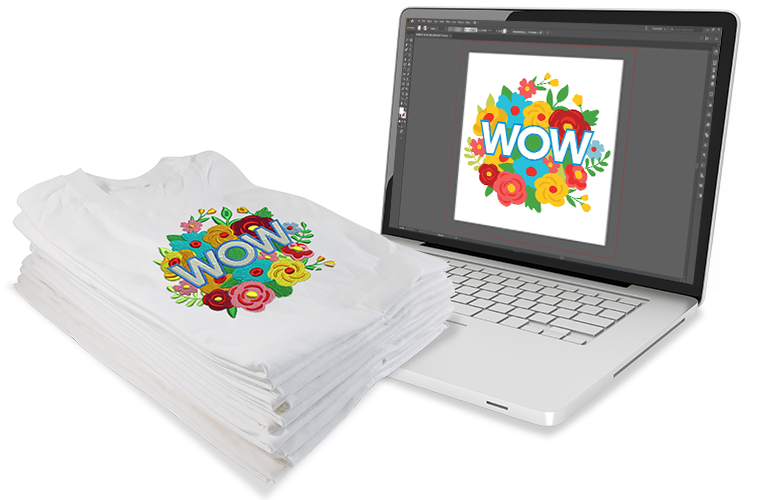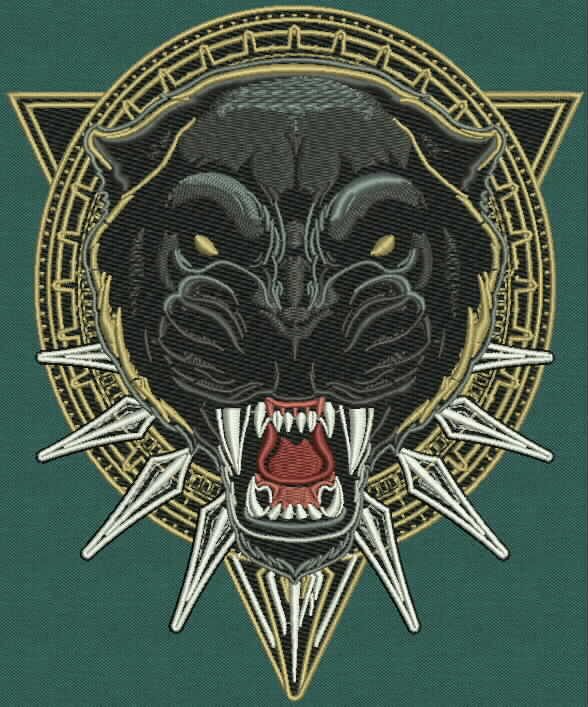Effective Digitizing for Embroidery: Quick Turn-around
Effective Digitizing for Embroidery: Quick Turn-around
Blog Article
Simplifying the Art of Embroidery Digitizing: Step-by-Step Overview
Needlework digitizing is a careful craft that requires accuracy and imagination. As technology remains to breakthrough, the digitization procedure has come to be extra easily accessible, enabling enthusiasts to bring their intricate layouts to life effortlessly. In this guide, we will certainly decipher the complexities of embroidery digitizing, damaging down each step methodically to simplify the procedure and empower both newbies and experienced embroiderers alike. Keep tuned to uncover just how you can simplify this detailed art type and transform your imaginative visions into perfectly embroidered masterpieces.
Understanding Needlework Digitizing Software
Embroidery digitizing software application functions as a crucial device for changing intricate styles right into digital layouts suitable with needlework makers, promoting precise sewing and modification. This customized software application permits users to import various picture data layouts, such as JPG or PNG, and transform them into needlework machine-readable layouts like DST, EXP, or PES - Digitizing for Embroidery. By utilizing features like stitch modifying, rug alternatives, and thread color selection, digitizing software program enables users to manage every element of the style procedure
Additionally, progressed needlework digitizing software supplies devices for developing complex designs, adjusting stitch density, and incorporating elaborate information. Individuals can additionally sneak peek the style prior to stitching it out, making sure precision and decreasing errors. In addition, several software program programs provide automated attributes that aid streamline the digitizing procedure, conserving time and effort.
Comprehending the abilities of embroidery digitizing software is vital for accomplishing top notch lead to embroidery projects. By mastering this device, needlework lovers and professionals can release their creative thinking and bring complex styles to life with precision and effectiveness.

Selecting the Right Design File
After familiarizing on your own with the capacities of needlework digitizing software, the next important step in the process is selecting the appropriate layout data for your project. Digitizing for Embroidery. When selecting a style file for needlework digitizing, it's crucial to take into consideration the complexity of the design, the dimension of the last product, and the sort of material you will certainly be collaborating with
For complex designs with great details, a high-resolution image or vector documents is suggested to make certain that the embroidery equipment can precisely recreate the design. In addition, the size of the end product plays a substantial function in picking the appropriate design file. Larger designs may require greater resolution data to keep clearness and sharpness.
Additionally, the kind of textile you will be stitching on affects the choice of style documents. Various fabrics may need adjustments in the style data to make certain that the stitches are correctly lined up and the layout appears as intended. By carefully choosing the ideal design file based on these aspects, you can establish yourself up for a successful embroidery digitizing procedure.
Digitizing Tools and Techniques
Using specialized software program and accuracy strategies, digitizing devices are vital in changing detailed designs into embroidery-ready data. Embroidery digitizing software their website application, such as Wilcom, Hatch, or Embrilliance, supplies the essential system to transform art work right into stitch data. These programs provide functions like stitch modifying, rug choices, and lettering tools to guarantee the style equates flawlessly onto fabric.
One of the key techniques in digitizing is developing a clear course for the needlework maker to comply with. This includes digitizing each aspect of the style with precision, identifying stitch kinds, densities, and directions. By using tools like digitizing tablets or software-specific plugins, embroiderers can achieve a high degree of accuracy in their digitized styles.
In addition, grasping the art of padding sewing is important for producing quality needlework. Underlay stitching maintains the textile and creates a foundation for the layout, making certain that the end product is both aesthetically attractive and lasting. By understanding these digitizing devices and methods, embroiderers can elevate their craft and bring detailed styles to life with accuracy and performance.
Tailoring Stitch Types and Instructions
Having developed a foundation in digitizing tools and methods, an essential element in progressing needlework craftsmanship hinges on personalizing stitch kinds and directions with accuracy and function. The choice of stitch kinds can substantially affect the total appearance and check this appearance of the embroidered layout. Satin stitches, understood for their smooth and glossy finish, job well for producing borders and text. On the various other hand, fill stitches are suitable for covering larger areas successfully. By tactically incorporating these stitch types, embroiderers you could try this out can accomplish depth and measurement in their designs.
Additionally, the instructions of stitches plays an important role in improving the aesthetic appeal of the final needlework. Numerous stitch directions can add structure, emphasize specific aspects, and develop aesthetic interest. Transforming the angle of stitches can imitate motion or all-natural patterns like hair or feathers. By try out different stitch angles and patterns, embroiderers can bring their layouts to life with exceptional information and ins and out. Mastering the art of customizing stitch types and directions empowers embroiderers to unleash their imagination and raise the quality of their work.
Screening and Refining Your Digitized Style
To guarantee the accuracy and quality of your digitized layout, complete screening and refinement are vital steps in the embroidery digitizing procedure. As soon as you have actually completed the digitization of your design, it is vital to examine it prior to waging the actual embroidery. Testing allows you to identify any kind of possible concerns such as string breaks, stitch density troubles, or layout distortions that might impact the final outcome.

After testing, it is crucial to fine-tune your digitized design based on the comments from the test sew-out. This might include tweaking stitch setups, changing thickness, or making changes to the total style to achieve the wanted result. By repeating with testing and improvement, you can tweak your digitized layout to excellence prior to progressing with the actual needlework process.
Verdict
Finally, mastering the art of needlework digitizing requires a complete understanding of the software application, picking the ideal design data, making use of digitizing tools and strategies, customizing stitch kinds and directions, and testing and refining the digitized design. By adhering to these actions, embroiderers can streamline the digitizing procedure and create top notch stitched layouts with precision and performance.
Report this page